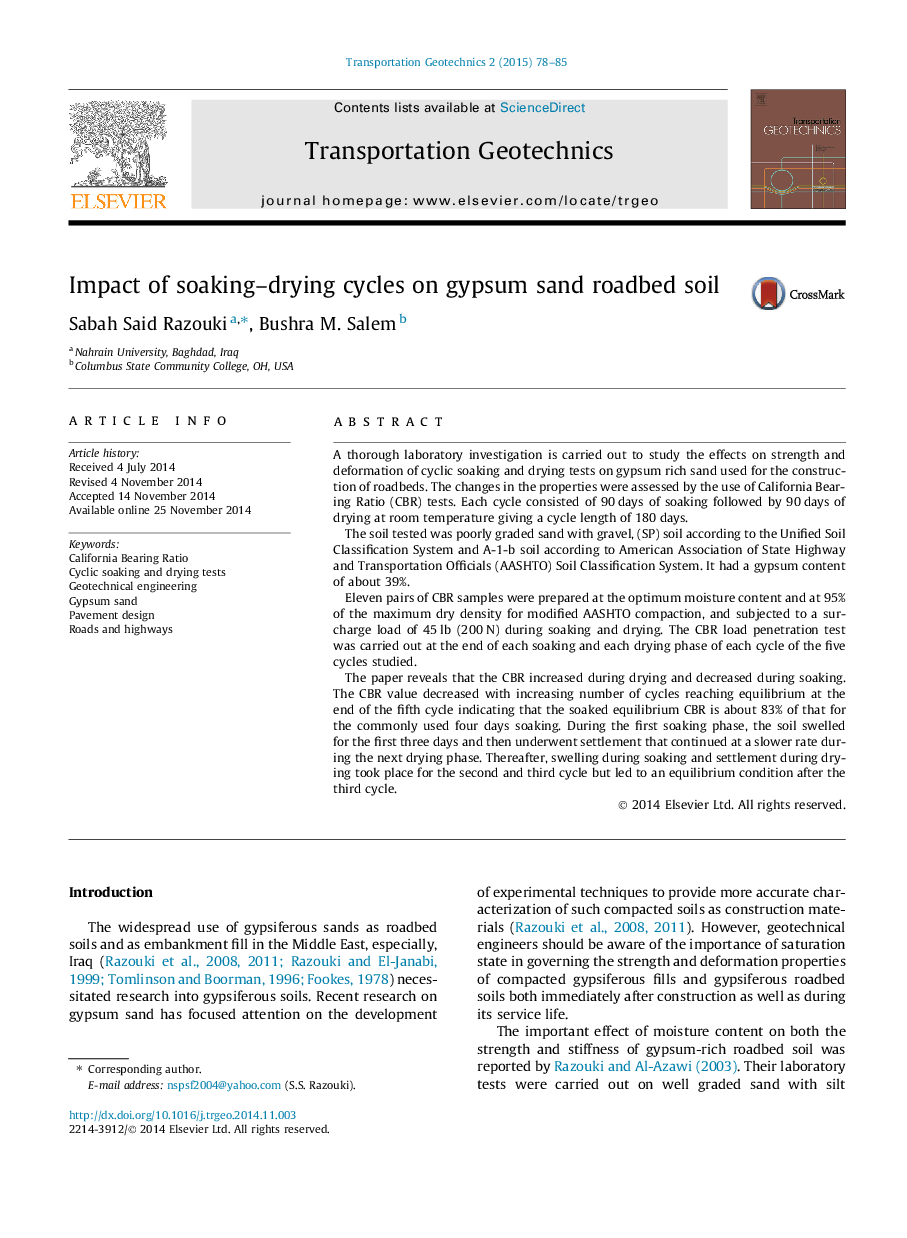| Article ID | Journal | Published Year | Pages | File Type |
|---|---|---|---|---|
| 310351 | Transportation Geotechnics | 2015 | 8 Pages |
A thorough laboratory investigation is carried out to study the effects on strength and deformation of cyclic soaking and drying tests on gypsum rich sand used for the construction of roadbeds. The changes in the properties were assessed by the use of California Bearing Ratio (CBR) tests. Each cycle consisted of 90 days of soaking followed by 90 days of drying at room temperature giving a cycle length of 180 days.The soil tested was poorly graded sand with gravel, (SP) soil according to the Unified Soil Classification System and A-1-b soil according to American Association of State Highway and Transportation Officials (AASHTO) Soil Classification System. It had a gypsum content of about 39%.Eleven pairs of CBR samples were prepared at the optimum moisture content and at 95% of the maximum dry density for modified AASHTO compaction, and subjected to a surcharge load of 45 lb (200 N) during soaking and drying. The CBR load penetration test was carried out at the end of each soaking and each drying phase of each cycle of the five cycles studied.The paper reveals that the CBR increased during drying and decreased during soaking. The CBR value decreased with increasing number of cycles reaching equilibrium at the end of the fifth cycle indicating that the soaked equilibrium CBR is about 83% of that for the commonly used four days soaking. During the first soaking phase, the soil swelled for the first three days and then underwent settlement that continued at a slower rate during the next drying phase. Thereafter, swelling during soaking and settlement during drying took place for the second and third cycle but led to an equilibrium condition after the third cycle.
